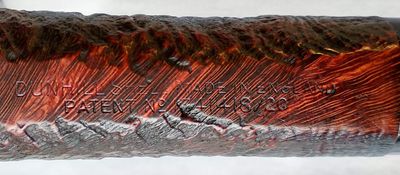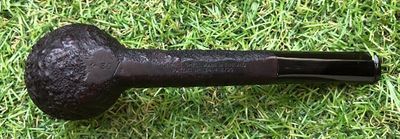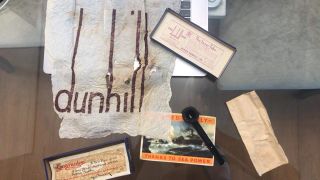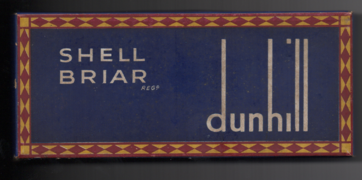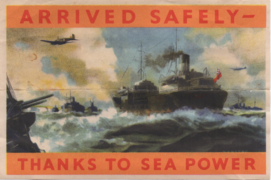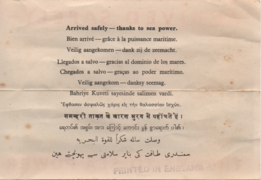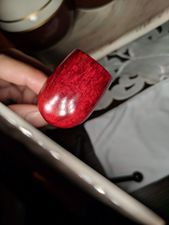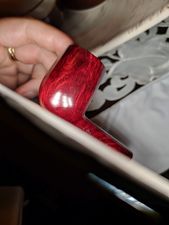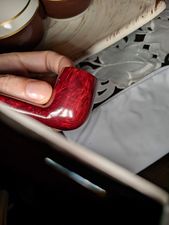Translations:WWII Phase/4/en
Loring also states that pipes from this period found on the estate market with vulcanite stems likely had the stems replaced at some point. It would not be surprising if Dunhill routinely replaced the horn stems with vulcanite at little or no cost after the war years.
Loring defends a hypothesis in his article called A Hypothetical WWII Pipe, in which he considers that during this period the following nomenclature was used:
No date code or any other nomeclature, like the inner tube, for example. According to the available historiography, the 1341418/20 patent begins to appear in 1920, almost always followed by another patent, as an example: PATENT MARCH.9.15 1341418/20. In rare cases it appeared alone. We recently had access to a pipe bought from that period (unsmoked!), perfectly aligned with Loring's hypothesis. Take special attention to the flyer that states: Arrived Safely - Thanks to Sea Power
and that reminds us of the war.
- WWII Pipe - Shell, Liverpool
Until approximately mid-1934 the nomenclature was done in the possessive, i.e. "Dunhill's Shell". After this period the possessive was dropped, becoming "Dunhill Shell". Thus, as the pieces in question are already from the time of non-possessive nomenclature, we can assume that they are post 1936. The only pieces found with this patent date are from the 1930s (1933 specifically), and return in the beginning of the 1940s (up to 1945, perhaps), when it was replaced by 417574/34. Some pieces have the same patent in the beginning of the 1940s (1941/42), however, with the suffix "U.S.", namely: U.S. PATENT 1341418/20, being destined for the North American market.
Here we have an atypical example of Bruyere (A, Shape T36. Patent Nº 417574. 1940) from this period. Remember that Italian Briar for smooth pipes was extremely scarce during the 40s.
Because a lack of material and paint in the war days, some Dunhill's from that Era look a little strange color wise. Also they could not get enough top quality briar and must do with was available. They used the whole root in war days instead of picking the just best part.Fred Wekx.
- Note: The pipe has a much clearer color than the original because of the high exposure to light.
In this particular case, it looks like the block was from the center of the burl. Maybe this pipe should have been sandblasted instead of being left smooth, but it was a difficult time, and perhaps this was the only way to produce a few good pipes.
